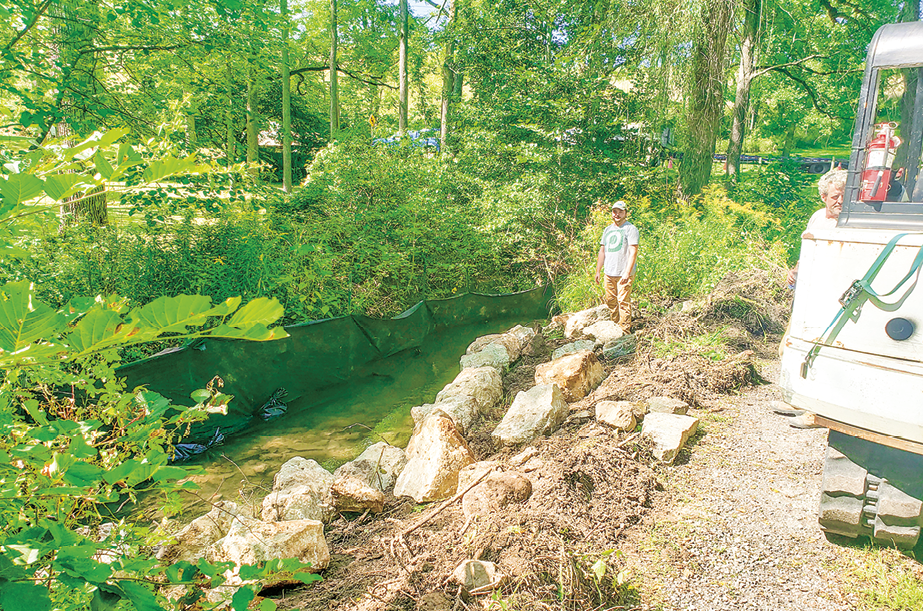Planting, educational programming, and in-stream restoration projects are on the go
Josh White watches with close attention as Mike Ashcroft’s excavator places 100 kg rocks in precise locations along the riverbank.
“These will become the foundation of a ‘vegetated buttress’,” says White, “and when it is complete it will not only shore up the streambank and prevent more erosion but prevent tonnes of sediment from being swept downstream during flooding.” White is Landowner Engagement Co-ordinator with Trout Unlimited Canada’s Niagara chapter, and just last week he finally received approval from the Niagara Escarpment Commission to commence in-stream work on a fragile section of Twelve Mile Creek, near Hollow Road.
“My predecessor in this position applied for a permit in 2020 and all approvals were finalized in the last two weeks of August 2021… just in time,” White explains, “to get the work done before the end of the permit period that extended into mid-September.”
White and his contracted project manager, restoration ecologist Chris DiRaddo, of Sassafras Farms, are guiding the placement of the rocks which will be packed into place with soil and tree roots, and then planted with native shrub and tree species to form the buttress.
“When it’s done right,” White says, “a vegetated buttress has more strength than tensile steel and it not only supports the bank at a key point, but serves to slow the velocity of the rushing water during floods and reduce erosion further downstream.”
This project is just one of many that White and his team are working on this fall. It is a cooperative venture with the NPCA and is partly financed by the Great Lakes Local Action Fund, with the landowner making “a significant contribution.” With some 85 percent of the land along Twelve Mile Creek in private hands, White is delighted when landowners take part in stream restoration.
“It’s great to see local landowners get involved both physically and financially in helping to naturalize the stream,” he says.
It’s great to see local landowners get involved both physically and financially in helping to naturalize the stream
Other projects the Niagara chapter is actively pursuing this autumn include shoring up a large clay cliff in Short Hills Provincial Park that is eroding huge amounts of sediment into the Twelve. In cooperation with Walker Environmental, who made a considerable contribution to the chapter for restoration work, White and his Niagara chapter volunteers will work with volunteers from Walker to build on earlier efforts to stabilize the sheer wall of clay by planting some 600 shrubs and trees across the face of the cliff.
Noting that tree planting anywhere in the Twelve Mile Creek watershed helps the creek by reducing excess water, providing cover, and stabilizing banks, White says the chapter has ambitious plans for the autumn planting window.
“With our NPCA partners we’re planning on planting more than 12,000 square metres of native trees, shrubs, and wildflowers on one property in a series of workdays that will involve some 150 volunteers,” he says. “It’s an effort to engage people, especially groups like Scouts and schools, in some of this important restoration work.”
On a smaller property, they will be planting along the stream edge to provide shade and bank stability, while more planting of shade trees will be the focus of a project to cool and protect amphibian ponds in Short Hills Park.
In addition to the ongoing work in and around the stream, the chapter is completing work on a series of educational modules that will present some of the challenges facing coldwater environments by focusing on the lifecycle of the native Brook Trout. Called “Bring Back the Brookies,” these programs are aimed at Grades 7 to 9 but are suitable for both younger children and adults. They take a local point of view, focusing on Twelve Mile Creek and its declining population of Brook Trout, which are the best indicator of a healthy aquatic environment. The modules will include workbook and manual components along with the video programs, and emphasize experiential learning through field trips and walks along the creek.



